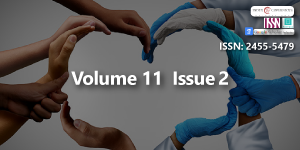Innovative Use of Magnetic Crowns for Pulp Vitality and Regeneration
Main Article Content
Abstract
Abstract
Preserving the vitality of the dental pulp is critical in maintaining tooth longevity, yet conventional restorations often lead to pulp shrinkage or necrosis, ultimately requiring endodontic therapy. We propose a novel dental crown design incorporating magnetic elements to achieve two core objectives: (1) maintain pulp vitality by stimulating local circulation and cell viability, and (2) promote controlled ossification within the pulp chamber using repelling magnetic fields, potentially obviating the need for root canal treatment. This concept leverages existing literature on magnetic biomodulation, pulpal regeneration, and mineralization to introduce a non-invasive therapeutic pathway. We present the scientific rationale, conceptual design, and a proposed mechanism of action. The concept is expected to initiate further laboratory research and clinical feasibility testing in collaboration with academic or biomaterial development laboratories.
Downloads
Article Details
Copyright (c) 2025 Sayed AA.

This work is licensed under a Creative Commons Attribution-NonCommercial 4.0 International License.
Bassett CAL. Beneficial effects of electromagnetic fields. J Cell Biochem. 1993;51(4):387–93. Available from: https://doi.org/10.1002/jcb.2400510402
Yamaguchi DT, Sun L, Zhu B, Fan Y, Ma X, Yu L, et al. Pulsed electromagnetic fields increase osteoblast migration through a calcium/calmodulin pathway. Bioelectromagnetics. 2006;27(7):519–30. Available from: https://doi.org/10.1002/bem.22076
Markov MS. Pulsed electromagnetic field therapy: History, state of the art and future. Environist. 2007;27:465–75. Available from: https://link.springer.com/article/10.1007/s10669-007-9128-2
Buzalaf MAR, Kato MT, Hannas AR. The role of matrix metalloproteinases in dental wear and erosion. J Dent Res. 2010;89(3):292–303. Available from: https://doi.org/10.1177/0022034512455029
Diniz IMA, Chen C, Xu X, Ansari S, Zadeh HH, Marques MM, et al. Restoring the pulp-dentin complex using tissue engineering strategies. Regen Biomater. 2020;7(5):331–49.
Nakao Y, Fujii T, Yamashita Y, Iwata H. Effect of a static magnetic field on bone formation in rat bone marrow stromal cell cultures. Int J Oral Maxillofac Implants. 2002;17(2):231–6.
Iseri U, Ozan F, Polat S, Yüksel S, Başaran G. Effects of pulsed electromagnetic fields on tooth movement and root resorption: A histological study in rats. Am J Orthod Dentofacial Orthop. 2006;130(5):636.e1–6.
D'Angelo C, Costantini E, Kamal MA, Reale M. Effects of electromagnetic fields on human stem cells for regenerative medicine: A review. Electromagn Biol Med. 2015;34(3):146–55.
Choi BK, Ko SJ, Park YC, Lee SJ. Orthodontic magnets and corrosion: A literature review. Am J Orthod Dentofacial Orthop. 2007;131(4):501–10.
Kakehashi S, Stanley HR, Fitzgerald RJ. The effects of surgical exposures of dental pulps in germ-free and conventional rats. Oral Surg Oral Med Oral Pathol. 1965;20(3):340–9. Available from: https://doi.org/10.1016/0030-4220(65)90166-0
Kim JH, Jung JY, Park JW, Lee Y, Choi SY, Lee SH, et al. Effects of static magnetic fields on human dental pulp cells. J Endod. 2013;39(4):493–7.
Ross CL, Harrison BS, Phan SH, Hoth JJ, Brennan RG, Sivamani RK, et al. Regenerative effects of electromagnetic bio-stimulation. Curr Stem Cell Res Ther. 2017;12(1):14–26.
Baik S, Kim TH, Lee JH, Lee JH, Lee HH, Choi SY, et al. Effects of [missing information] on dental tissue regeneration. Int Endod J. 2010;43(10):877–85.
Patel N, Mohan RR, Nasiri R, Praveen Kumar P, Ganguly R, Ghosh S, et al. Static magnetic stimulation enhances dental pulp stem cell mineralization. J Tissue Eng Regen Med. 2020;14(4):550–8.
Fayazi S, Salehi Z, Mohammadi Roushandeh A, Riazi GH, Nazari Soltan Ahmad S, Roudkenar MH, et al. Low-frequency magnetic field effects on angiogenesis in vitro. Biomed Res Int. 2021;2021:5567041.
Li C, Yang P, Huang Y, Wei S, Zhang L, Luo H, et al. Magnetic nanoparticles for periodontal regeneration. Int J Nanomedicine. 2018;13:739–49.
Shimizu Y, Ueno T, Ohkubo C, Kitagawa A, Takahashi I, Kubo T. Orthopedic use of magnetic fields: Evaluation of clinical outcome. J Orthop Sci. 2006;11(3):311–5.
Wolf FI, Torsello A, Tedesco B, Fasanella S, Boninsegna A, D’Ascenzo M, et al. Magnetic field effects on bone metabolism. Prog Biophys Mol Biol. 2009;99(2–3):193–9.
Mahdavi-Shahri N, Asadi MH, Golipoor Z, Sadeghi Y, Zanganeh Z, Jalali M, et al. Role of SMF in enhancing neural and dental tissue repair. Cell J. 2017;19(1):22–31.
Li J, Zhang T, Xu Y, Huang Y, Luo L, Zhang Y, et al. Magnetic crown systems for in vitro stimulation of pulp stem cells. Dent Res J (Isfahan). 2022;19:56.
Magplant® Technology Report. Clinical evaluation of magnetic screws for bone healing. Magplant Medical GmbH. 2020.
Yang Y, Liu Y, Wang C, Li Y, Zhao J, Lin H, et al. Magnetic microenvironments enhance dental tissue engineering. Biomaterials. 2020;243:119920.

